For eighteen years, The Quail, A Motorsports Gathering has provided an exclusive experience for motorsports enthusiasts from around the world to enjoy rare collections of fine automobiles and motorcycles in a garden-party setting on the rolling greens of Quail Lodge & Golf Club. The Quail and other 'Monterey Car Week' events returned in 2021 after cancellation in 2020 due to the global pandemic. Held in conjunction with The Quail, A Motorsports Gathering, is the 24th Annual Bonhams Motorcar Auction on the western grounds of Quail Lodge & Golf Club offering easy access, plenty of convenient parking, and lots of sunshine amidst the famous Carmel scenery.
The Quail, Amotorsports Gathering is a world-renowned motorsports event, a prominent component of Monterey Car Week, and a canvas where many of the world's rarest and most exquisite vintage and modern automobiles are showcased. The event is paired with many delicious culinary delights and luxury lifestyle elements in an intimate gathering of old and new friends. This year's celebrated themes included 'Cars of Curiosity,' '50th Anniversary of the Alfa Romeo Montreal,' and 'Automotive Couture, French Cars Featuring the 50th Anniversary of the Citroën SM.'
Keeping with tradition, the featured classes complemented the familiar roster of pre- and post-war classes lining the prestigious greens of Quail Lodge & Golf Club, including 'Pre-War Sports and Racing Cars,' 'The Great Ferraris,' 'Post-War Sports Cars 1961-1975,' 'Post-War Racing Cars,' 'Custom Coachwork,' 'The Evolution of the Supercar,' 'Sports and Racing Motorcycles' and 'Post-War Sports Cars 1945-1960.'
The Cars of Curiosity class was described by The Quail's Gordon McCall as 'cars that were a little odd and their owners embraced that. They didn't want something cliche that could be seen everywhere.' He added, 'They wanted something unique. For instance, a Volvo P1800 station wagon is a very good car, but wasn't an overly popular station wagon....People love such cars today because they are approachable. They put a smile on your face. They are motorcars with whimsy.' Vehicles included in this class were the Fiat Eden ROC, the Volkswagen Karmann-Ghia, the Studebaker Gran Turismo Hawk, the Volvo 1800ES, and a pair of Guldstrand-built GS90 Corvettes.
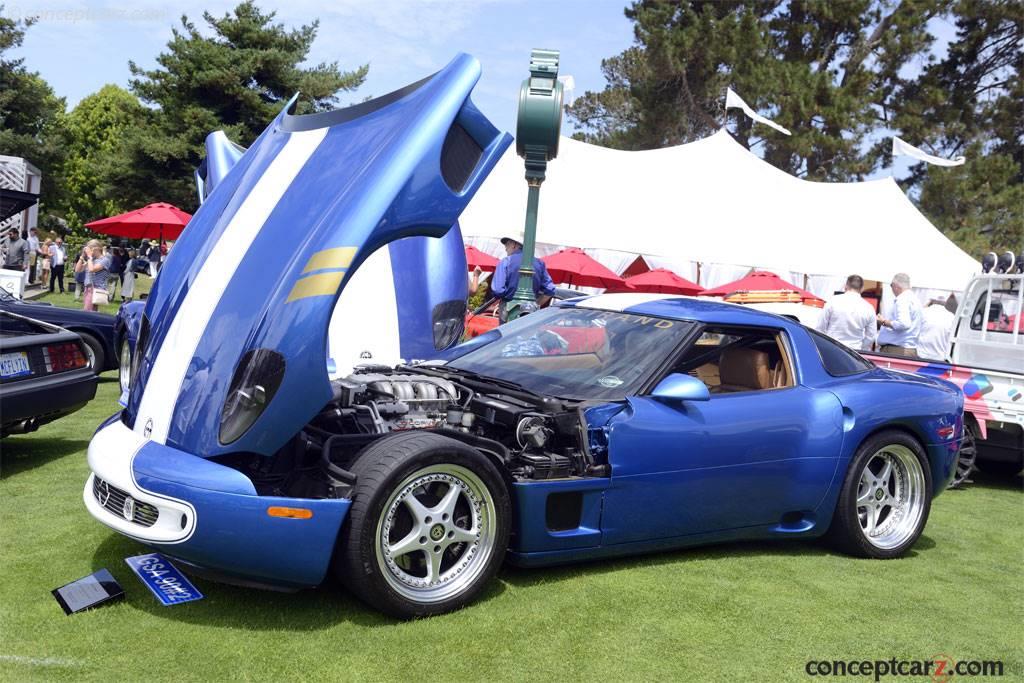
Famous Corvette racer Dick Guldstrand, also known as 'Mr. Corvette,' sought to build a true 'World Class' American supercar based upon the then-new ZR-1. Rather than a standard appearing version, he sought to provide a distinctively designed bespoke style that harked back to the 'classic' racing Corvettes of the 1950s and 1960s, yet debut the latest features, such as being the first Corvette with projector headlights as well as the three-piece 18-inch wheels. Every panel is new and made of carbon fiber and every scoop or vent is functional. Only the windshield, door glass, and rear-view mirrors remain from the original design. The coupe on display at The Quail was a magazine test car, brochure photo car, as well as being the very first customer-delivered GS-90.
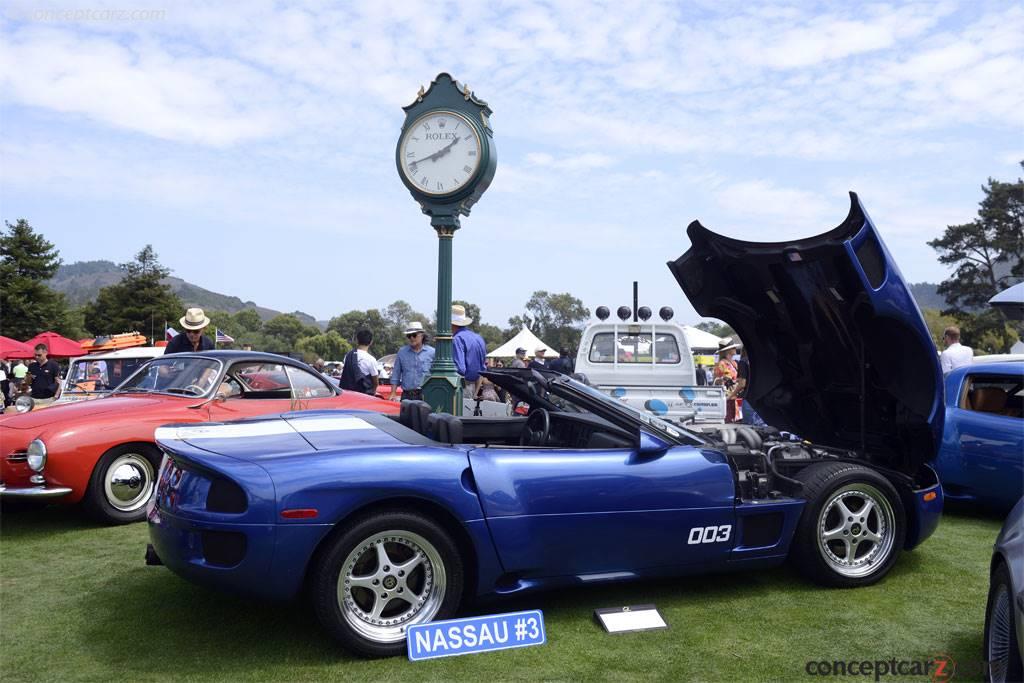
The Dick Guldstrand-built Corvette convertible sitting on display was altogether a different animal from the Coupe GS-90. Its modified LT-1 Corvette engine features a Vortech Supercharger, boosting the horsepower from 300 hp up to approximately 420 hp, ahead of a four-speed automatic and 4:10 Dana 44 rear axle. The performance placed this car in the front ranks of international supercars!
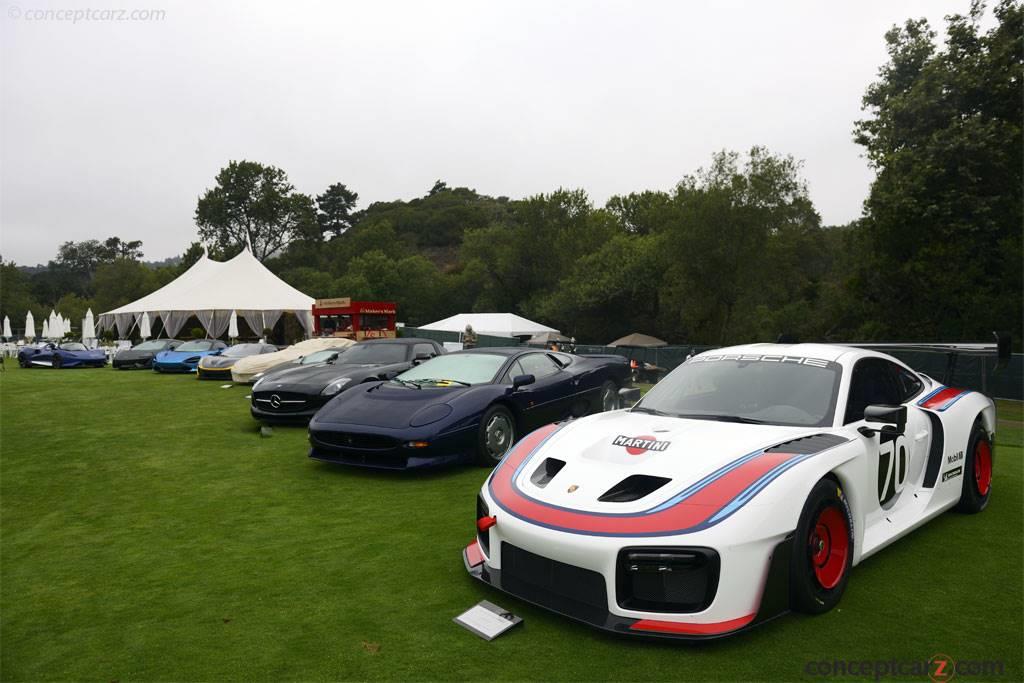
The Evolution of the Supercar class was a brilliant display showcasing vehicles with household names such as the Lamborghini Countach, Lamborghini Diablo, Saleen S7, BMW Z8, Porsche 959, and the Venturi 400 Trophy. More modern examples on display included Chevrolet's new mid-engine Corvette, the Mercedes-Benz Bussink GT R Speedlegendand, the Mercedes-Benz SLS AMG, and the McLaren P1.
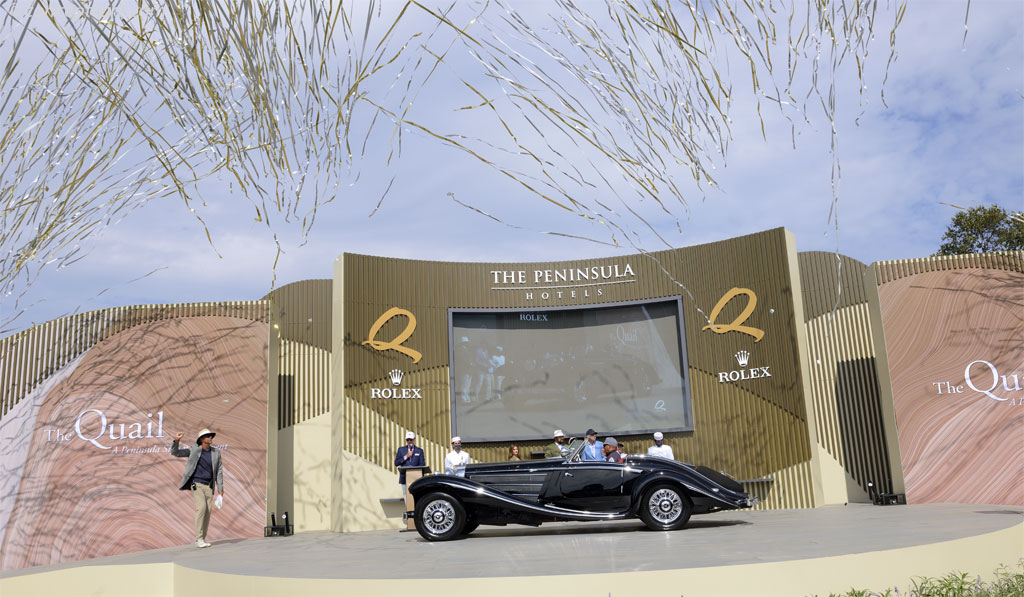
The 'Best of Show' honor was bestowed upon a 1938 Mercedes-Benz 540K Special Roadster owned by K. Heinz Keller. It wears Sindelfinger Karosserie Coachwork and was considered one of the fastest production cars of its era. The 5401cc straight-eight engine was the ultimate production version of the supercharged 'Kompressor' line that had begun with the 380K in 1932. Developed by the new chief engineer of Mercedes-Benz, former racing driver Max Sailer, the 540 K succeeded the outwardly similar 500 K in 1936, and some 447 were built before production ended in 1939.
The Mercedes-Benz 540K was perfectly suited for the network of high-speed Autobahns that were spreading across Germany in the 1930s. With its all-round independent suspension by swing axles and an unusual gear shift, with direct-drive top semi-automatically engaged, the 540 K represented the pinnacle in automotive engineering in its day. The Mercedes-Benz-derived supercharger was a unique 'at will' supercharger derived from the company's experience in aero engine design, enabling World War One German aircraft to gain a performance advantage by boosting engine power at altitude. The 540K's supercharger was only clutched in at full throttle, endowing the 540 K with a short power boost for overtaking.
Over the past eighteen years, The Quail, A Motorsports Gathering has become a prominent component of 'Monterey Car Week.' After such a difficult year for the entire world, The Quail returned with an outstanding array of vintage and modern automobiles and several worldwide debuts.
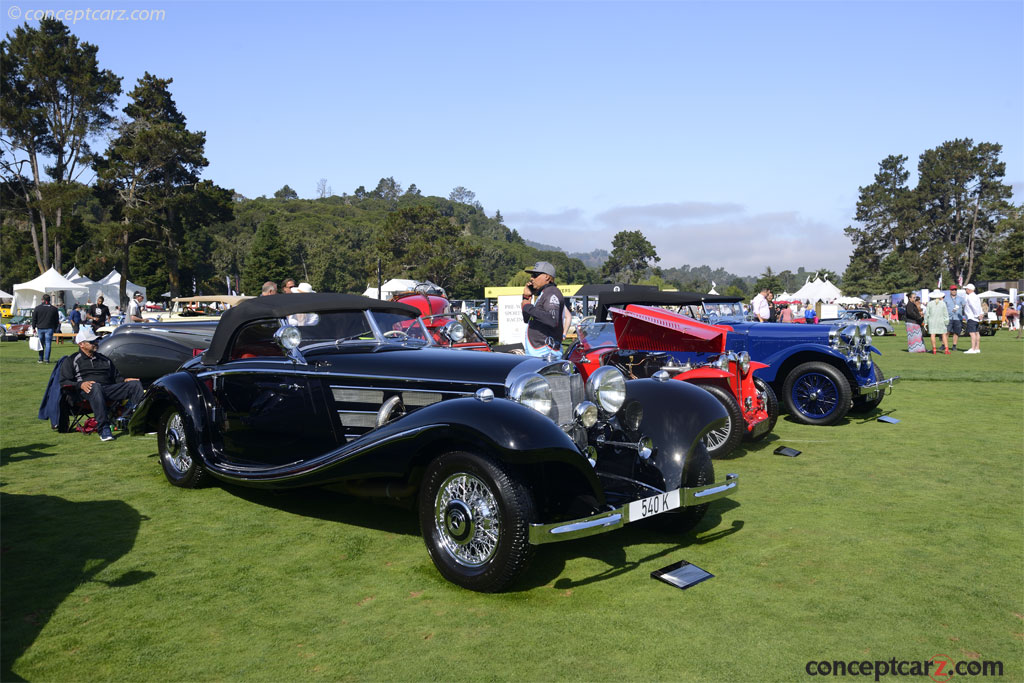
Among the most elegant vehicles at this year's The Quail, A Motorsport Gathering - in our opinion - were the 1931 Duesenberg Model J, a Horch 853, and the Mercedes-Benz 540K.
The Duesenberg
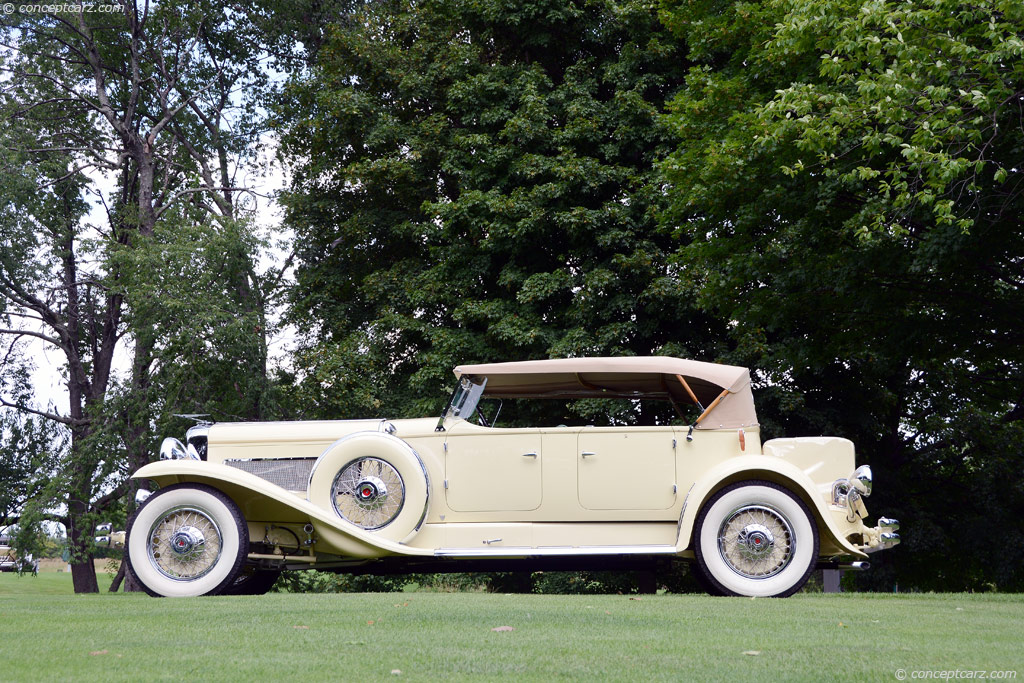
The Model J was the most powerful production vehicle of its era, and in supercharged guise, developed over 300 horsepower. Cadillac's V-16-powered model had twice as many cylinders as the eight-cylinder Model J but produced less horsepower (175 bhp vs the 265 bhp from the 420 cubic-inch straight-8). It was not until 1955 that another North American manufacturer would offer a production vehicle with similar horsepower figures - the Hemi-powered Chrylser C-300 with 300 horsepower.
The mechanical sophistication of the Duesenberg was equaled by its size and elegance, clothed with graceful bodies provided by the finest coachbuilders of the era. The example on display at The Quail, chassis number 2646 (J-448), wore a Tourster body by Derham. It is one of the few retaining the original body, chassis, engine, and other major components. The 420 cubic-inch 'Straight Eight' engine delivered 265 horsepower in naturally aspirated form with dual overhead cams and four valves per cylinder. It has the SC-specification external exhaust pipes which provide period flair, and performance is enhanced by an exhaust system dump at the flip of a lever on the floor. The exhaust-dump system was a rare option; it bypasses the exhaust system and redirects the airflow through a three-inch open pipe.
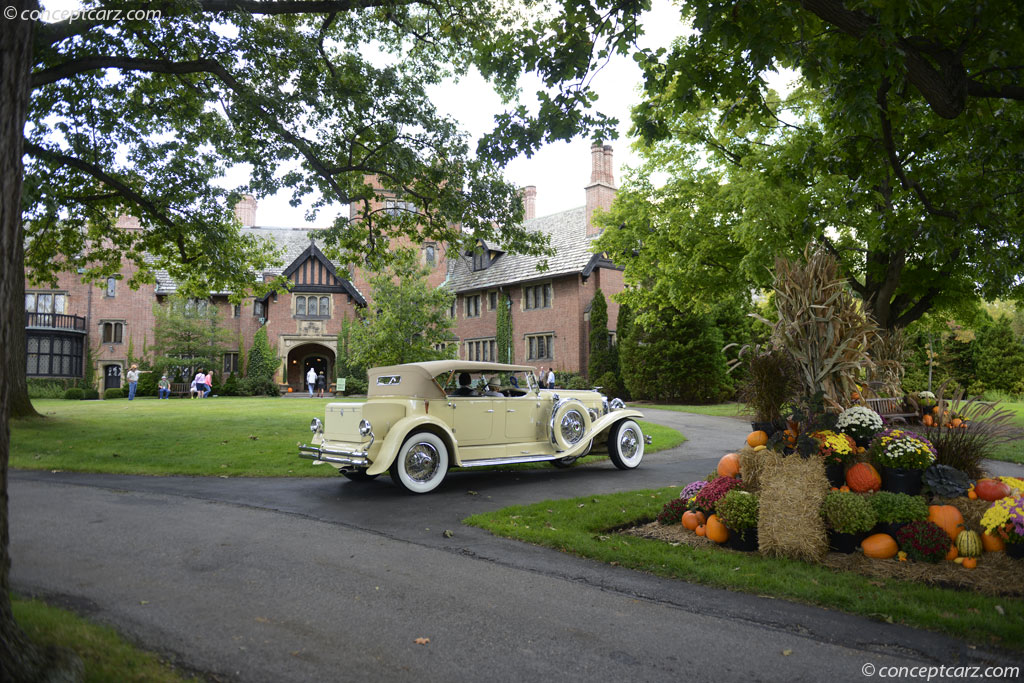
Just eight examples received the Derham Tourster coachwork designed by Gordon Buehrig. Design cues include a wind-up rear windshield that could be cranked from inside the front seat back. The deletion of the rear side vents and the rear cowl made it easier for passengers to enter and exit.
Following a nut and bolt restoration, the Tourster was awarded Best of Show honors at the Concours d'Elegance of America in 2013, best in class honors at Amelia Island and Pebble Beach Concours in 2012, where it was nominated for best of show.
The Horch
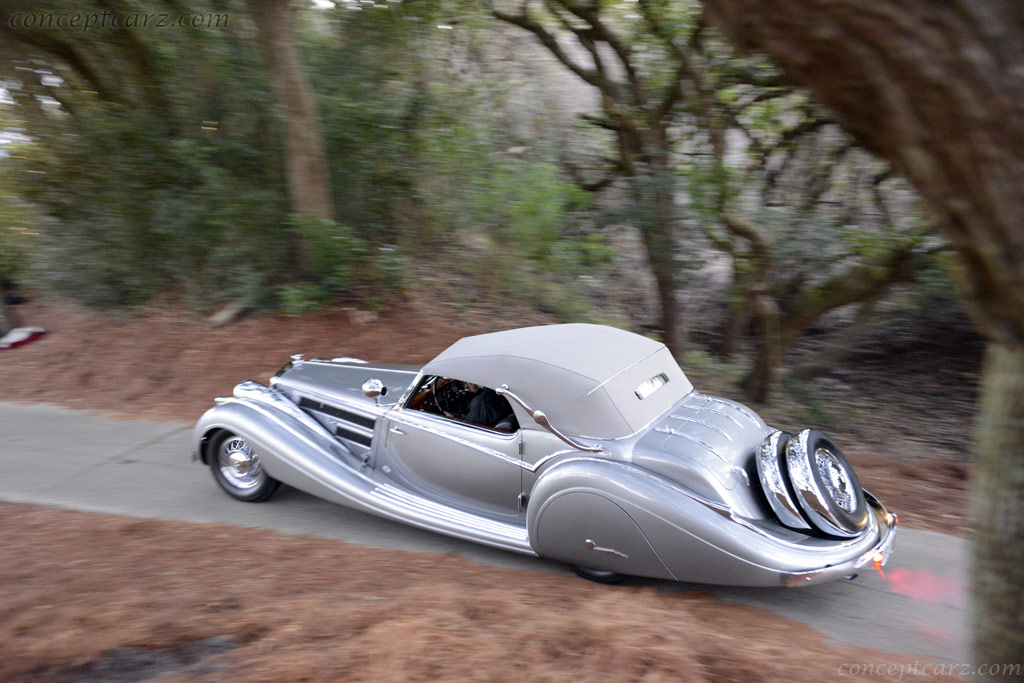
The Horch and the Mercedes-Benz rested side-by-side on the showfield - an appropriate arrangement for these two spectacular vehicles. Horch, named after its founder August Horch, had always been known for its quality and innovation but its reputation would be challenged greatly when Mercedes-Benz unveiled its new 540K. Immediately, Horch began to design a concept meant to compete with the new Mercedes. Carved out of wood, the Horch Special Roadster would be undertaken by the factory works in Malan. And though the car's chassis would begin production, the cars would not be made available for sale, at least not right away. The delay would have to do with whether or not the engines would be supercharged. Ultimately, the 5.0-liter inline eight-cylinder engine remained naturally aspirated but the transmission was equipped with overdrive, which would give it performance close, but not quite the same, as the 540K. The chassis, however, did receive a fully independent De Dion rear suspension placed on double-jointed rear axle shafts designed by Porsche.
The 'First Series' production examples followed very closely to the designs of the concept that had been carved out of wood. The first example would be built by the factory. The second example would be designed and built by the exceptional coachbuilders from Berlin, Erdmann and Rossi.
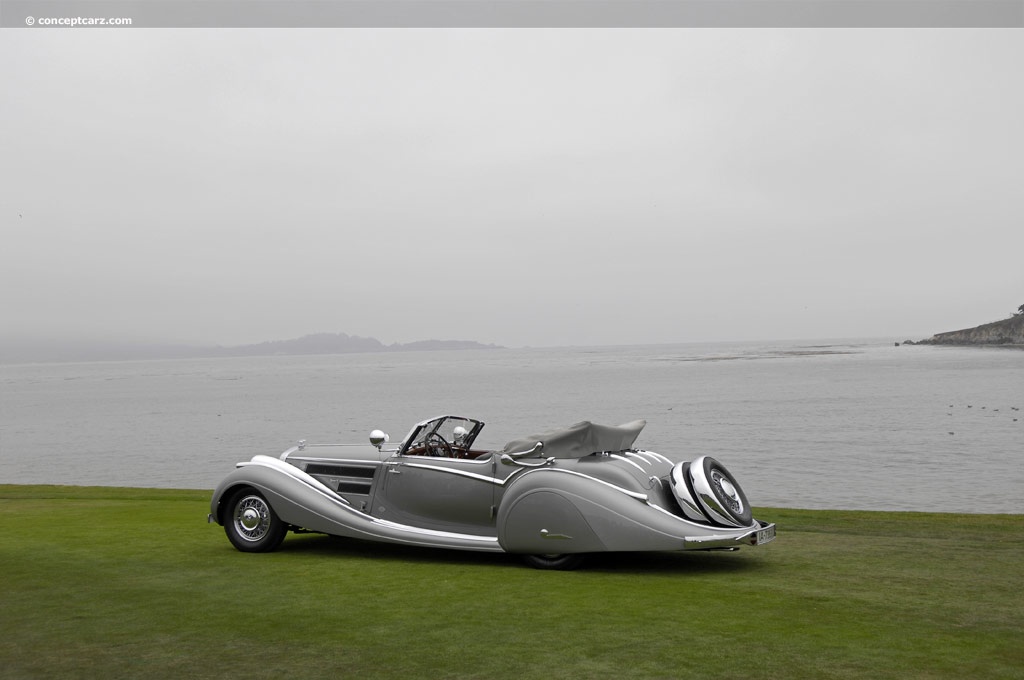
As the Second World War came into view and the Nazi party gained power throughout Germany, Mercedes-Benz and Horch continued to compete for superiority, hoping to gain contracts to build parade vehicles for high-ranking members of the Third Reich. Horch would build the first example of the 'Second Series' especially for Hermann Goering, commander-in-chief for the German Luftwaffe. However, Mercedez would also be building a special 540K for him as well, equipped with extra materials to protect the occupants within the vehicle. Goering would go with the Mercedes and would have the Horch, which had been built especially for him, dismantled.
Horch would ultimately build just five examples of the 'Second Series' 853s. The first example was the one dismantled by Goering and the last would be lost. Thus, just three examples of the 'Second Series' remain. All five wore the same 'sweep panel' in the body sides and the shaped fender skirts, however, each were quite unique in their own design.
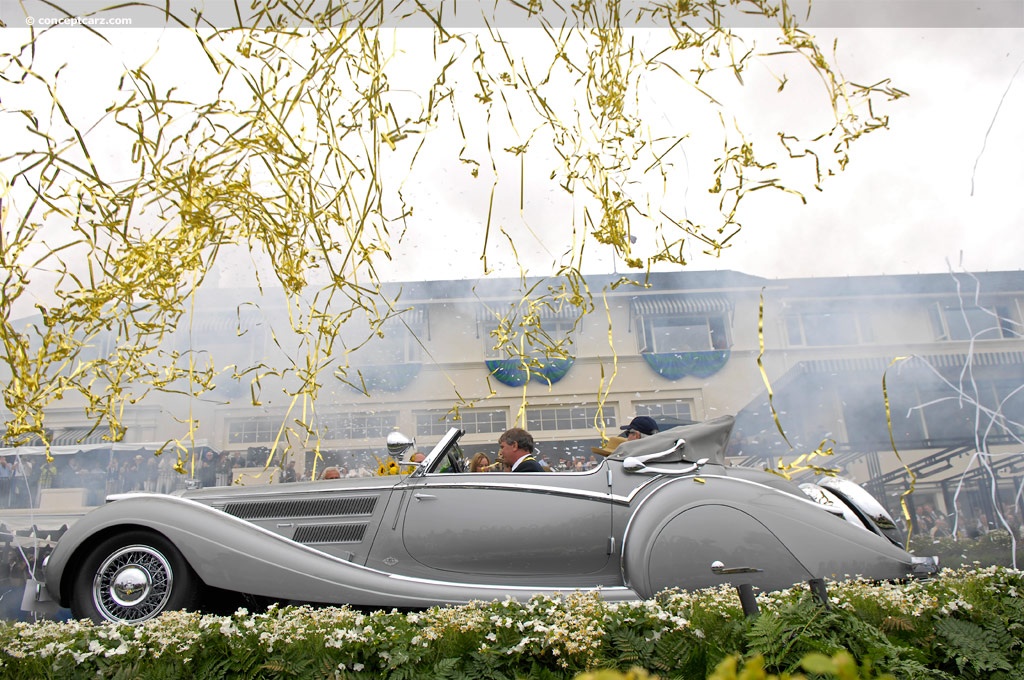
The example on display at The Quail is believed to be the second example with coachwork by Voll & Rubrbeck. They were a German coachbuilding firm in business for approximately two decades, from 1920 through 1939. Their work graced such automobiles as Bugatti, Mercedes-Benz, Rolls-Royce, and Maybach. During World War II, the firm was destroyed from an allied bombing raid, and records were also lost.
The Horch 853 with Voll & Rubrbeck coachwork survived, and more recently, its elegance has been observed at many top concours events. It won Best of Show honors in 2009 at the Pebble Beach Concours, and the same accolades in 2014 at the Amelia Island Concours. At this year's The Quail, A Motorsport Gathering, it was certainly a contender for top honors.
The Mercedes-Benz
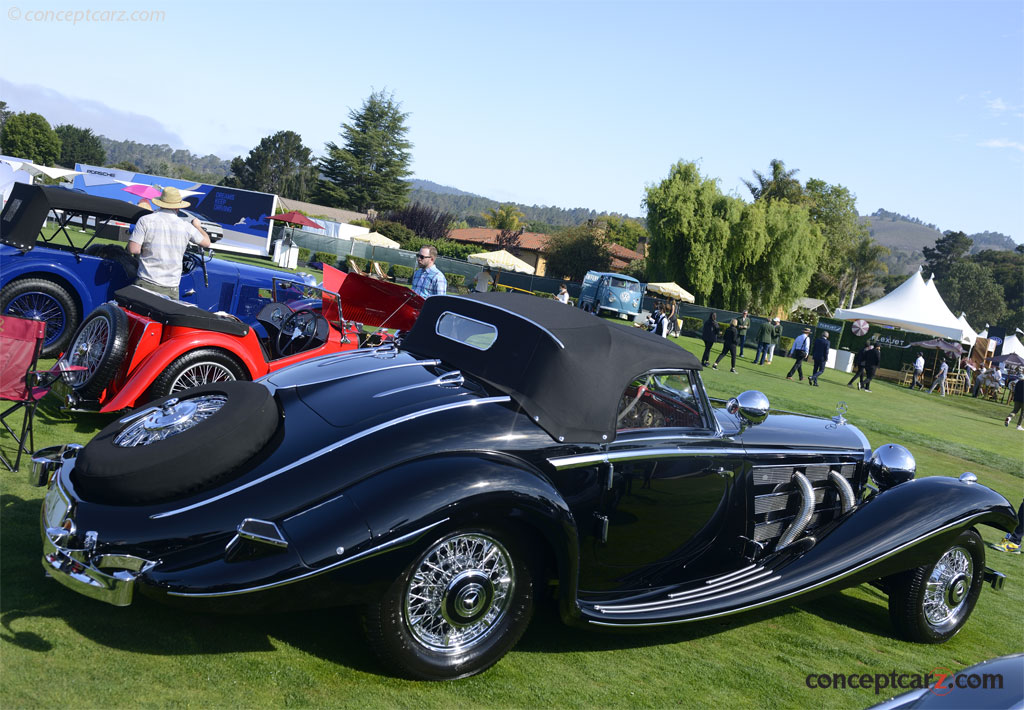
The Mercedes-Benz 540K proved its superiority over the Horch during World War II, being built in greater numbers and with far superior examples built. The example receiving the Rolex Circle of Champions' 'Best of Show' at The Quail is owned by K. Heinz Keller from California who has owned the car since 1986. Mr. Keller acquired the car from a private owner in Colorado and has treated the vehicle to an eight-year ground-up restoration. Its design, engineering, sophistication, and presentation made it a Paragon among the more than 200 entrants at the event.
While traditional concours events rely on the wisdom and scrutiny of judges (experts in the automotive fields), The Quail, a Motorsports Gathering distinguishes itself through its unique judging process. Entrants of The Quail select the winning car in their own class, as well as the esteemed Best of Show. Entrants at The Quail are knowledgeable individuals in the world of motor vehicles as many are renowned experts and car collectors. Many are also well versed in style and luxury lifestyle. The selection process for each class considers criteria of design features, technical interest, accurate restoration, and historical significance.
Both the Horch and the 540K wore strikingly similar designs. Provenance and restoration certainly played a part in the decision, but perhaps the deciding factor was the 180 horsepower produced by the Mercedes compared to the 120 bhp of the Horch. Like its place in history, the Horch would play 'second fiddle' to the mighty Mercedes-Benz 540K which was selected as this year's Best of Show. The popularity and elegance of the Mercedes-Benz 540K were further reinforced when another example claiming the Best of Show trophy at the Pebble Beach Concours d'Elegance a few days later.
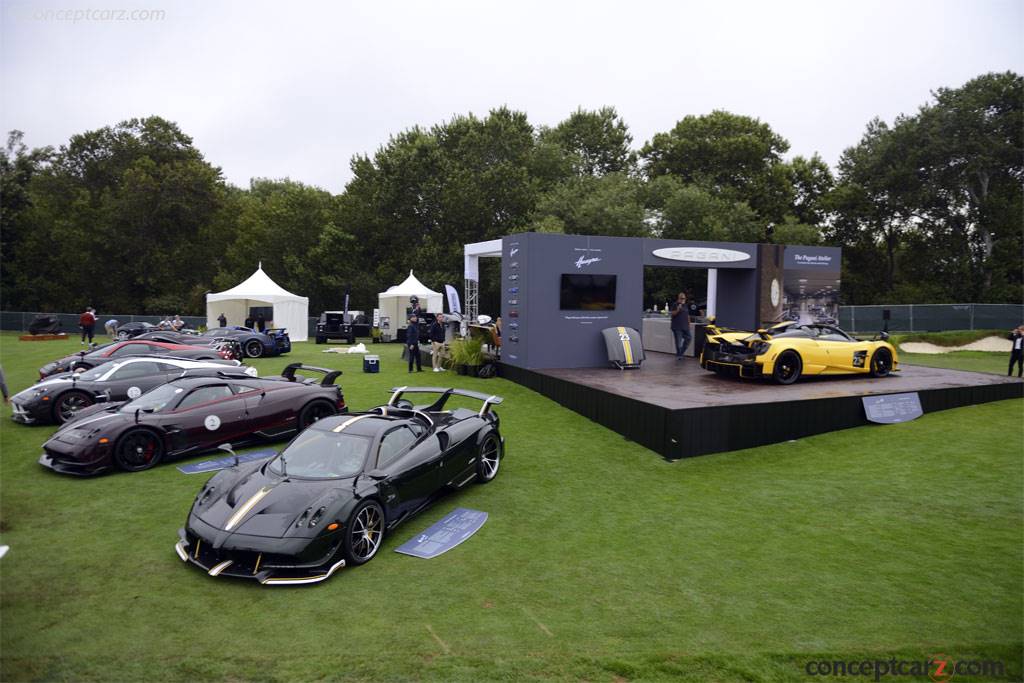
Among the many highlights that greet guests as they enter the show field was the Pagani display which traditionally showcases approximately a dozen of these exclusive examples resting shoulder-to-shoulder. Pagani Automobili S.p.A. is an Italian manufacturer of sports cars and carbon fiber components that was founded in 1992 by the Argentinian Horacio Pagani and is based in San Cesario sul Panaro.
The company's first model was the Zonda equipped with a mid-mounted DOHC V12 engine manufactured by Mercedes-Benz's AMG division. The exterior design was inspired by the Sauber-Mercedes Silver Arrow Group C cars and by jet fighters, incorporating several unique design elements, including its four-pipe exhaust system.
On display at The Quail, A Motorsport Gathering was a Zonda F and the first S&D approved, fully legalized Zonda F example to date, confirmed by the factory.
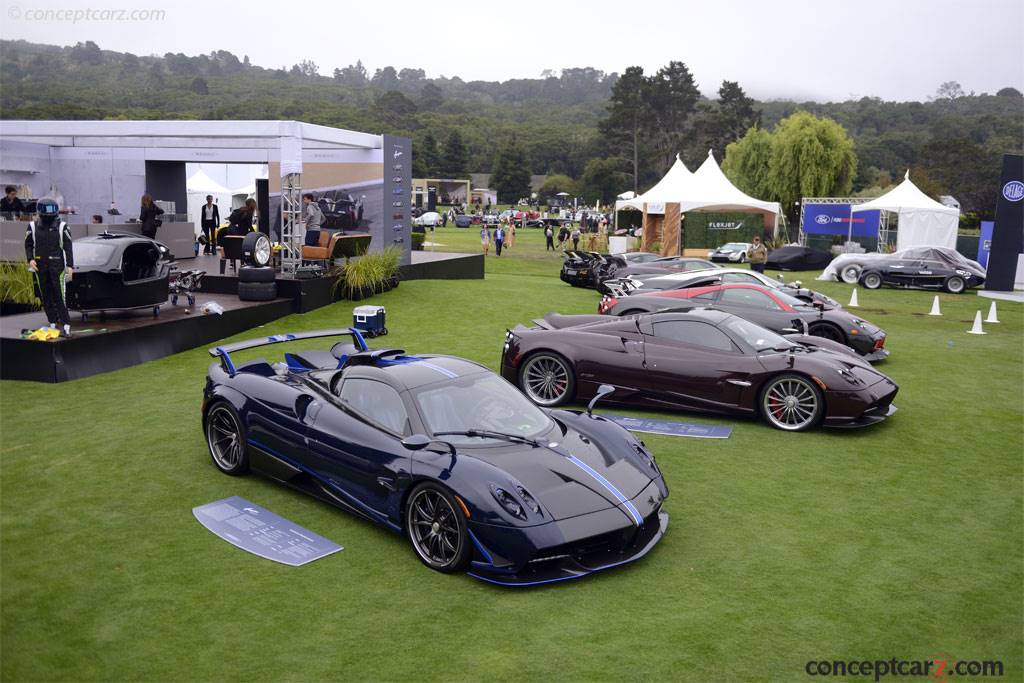
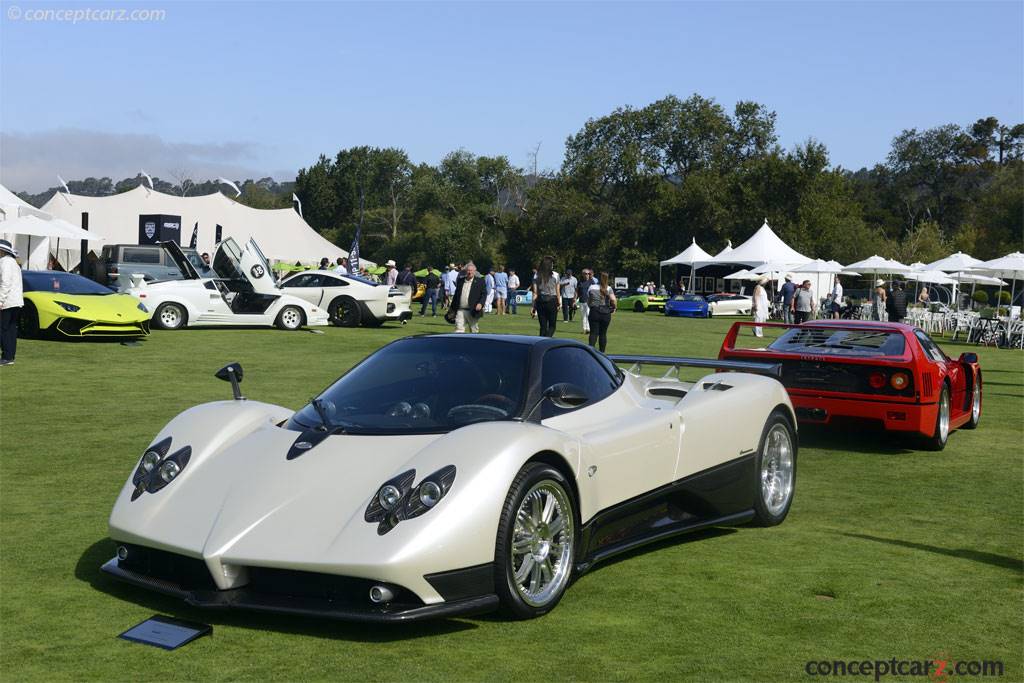
The Pagani Zonda was followed by the Zonda 'Cinquie' in 2009, based on the track-only Zonda R and powered by a new 678 horsepower Mercedes-Benz M297 V12 engine. Just five examples were built and each received several unique elements from the newly developed material 'carbon-titanium fibre.' An additional five examples of the Zonda Cinque Roadster followed in July of 2009, powered by the same M297 Mercedes engine.
Three examples of the Zonda Tricolore were eventually built. First introduced in 2010 at the Geneva Motor Show, the exclusive model was built to commemorate the 50th anniversary of the Frecce Tricolori, the Italian Air Force's aerobatic squadron. The 7.3-liter Mercedes AMG V12 engine delivered 670 horsepower endowing it with a top speed of 217 mph and capable of racing from zero-to-sixty mph in a mere 3.2 seconds.
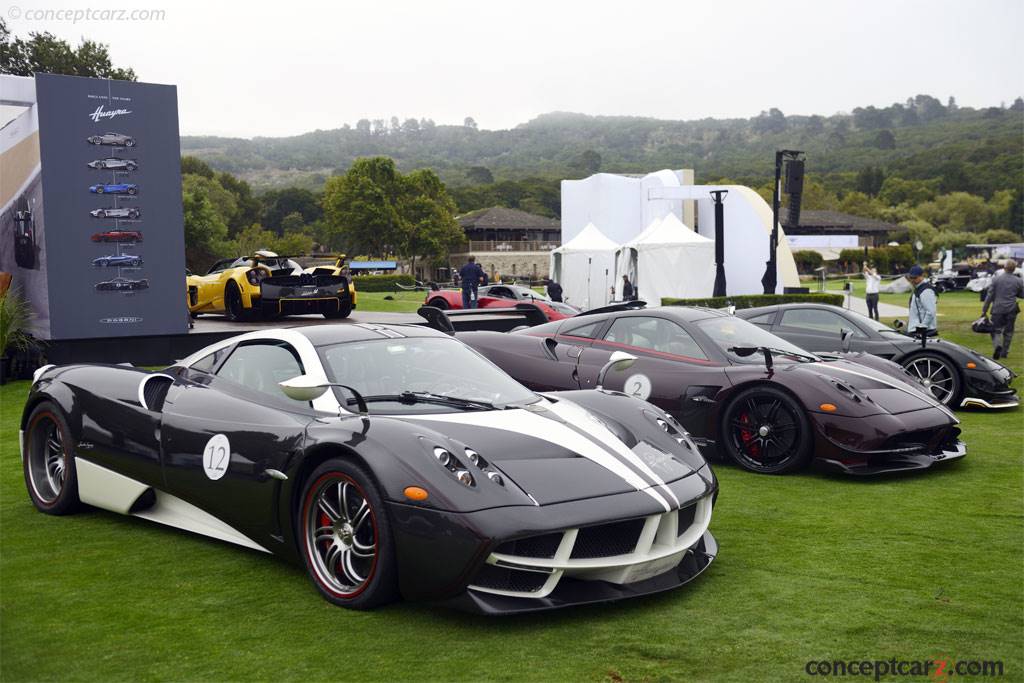
At the Geneva Motor Show in 2011, Pagani introduced the successor to the Zonda, the Pagani Huayra named after the Incan god of wind, Huayra-tata. Its 6.0-liter twin-turbocharged M158 V12 engine from Mercedes AMG produced 730 horsepower and 1,000 NM of torque. The body was comprised of carbotanium - a lightweight composition of carbon fiber and titanium. A total of 100 examples were built with each example selling new for over a million (USD) dollars.
Thanks to its innovative characteristics, the Huayra achieved three of the most prestigious awards in the car world as Car of The Year in 2012.
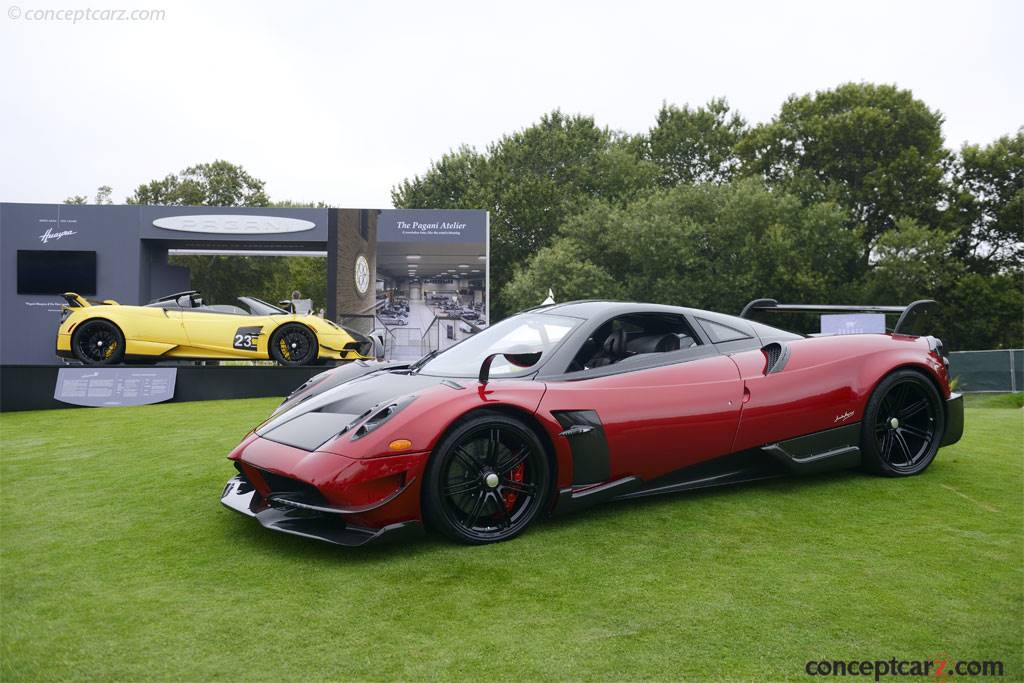
In 2016, the Huayra BC was displayed at the Geneva Motor Show, with the 'BC' named after the late Benny Caiola, a friend of Horacio Pagani, and the first Pagani customer. Although the Huayra was already a paragon in the hypercar arena, Pagani raised the bar even further, improving upon the Huayra's engine with output growing to 754 horsepower. An all-new material called 'carbon-triax' allowed weight to be reduced by approximately 290 pounds, and additional weight was shed by the lightweight titanium exhaust system, new aluminum alloy wheels, and a stripped-out interior. Only twenty examples were built and each had an MSRP exceeding $2 million (USD).
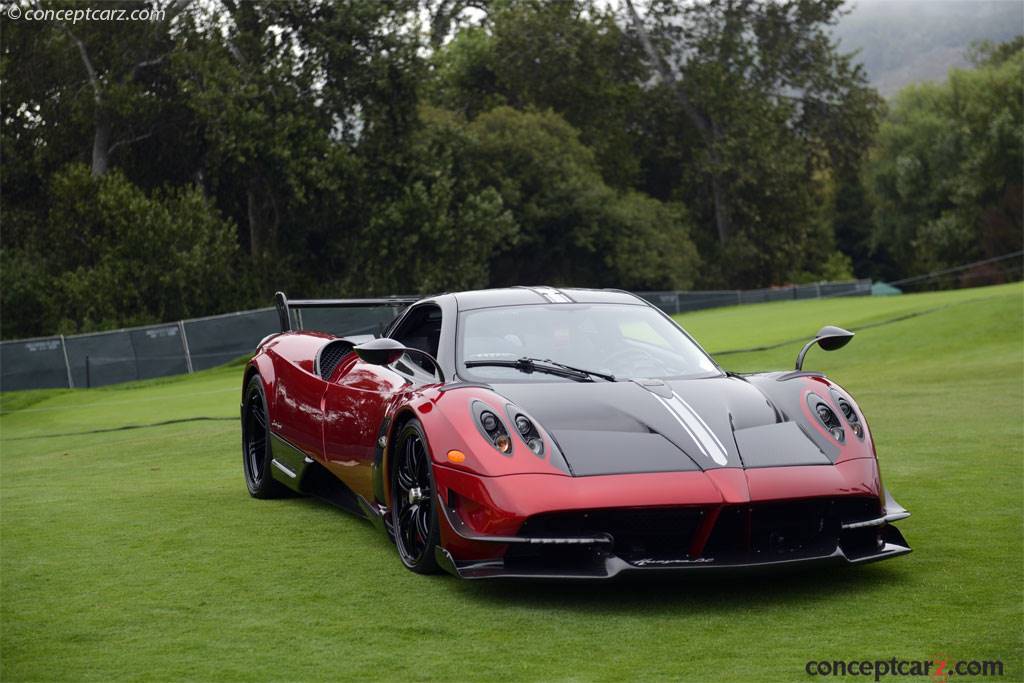
Conceived primarily as a road-going car, the Huayra BC has been inspired by its 'track-focused' predecessors: the Pagani Zonda R and the Zonda Cinque. Developed as a natural evolution of the Coupe, the car is pure raw power packaged into a 1218 Kg high-performance automobile, and, at 1.8 G, is capable of the highest lateral acceleration ever seen on a car with road tires.
At the time of its launch, the Huayra BC was the most technologically advanced Huayra Coupe yet.
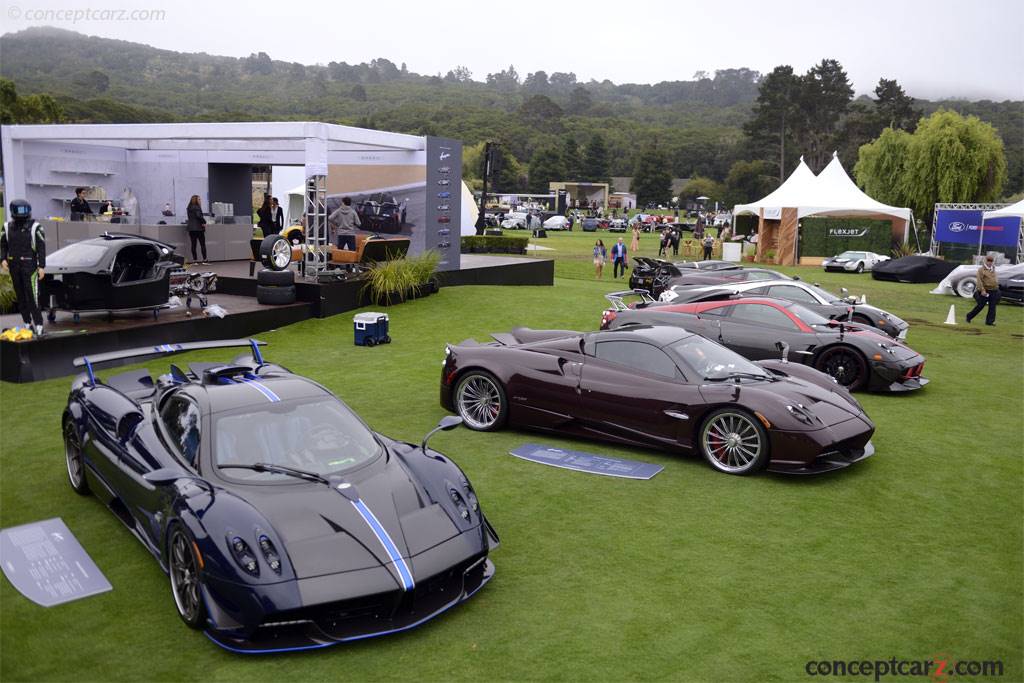
One example on display at The Quail, A Motorsport Gathering, was a made-to-measure upgraded example with a custom-made spoiler inspired by the Roadster BC design. The air scoop and the conveyor placed beneath the bonnet direct the airflow to the engine to augment its efficiency and performance. The hardtop is rigid and made of carbon fiber like the Roadster BC, as are the seats which are now single-piece. Furthermore, their stitching design recalls the pattern of the carbon-fiber details, whereas, on other Roadsters, they would be made of leather.
Tractive's new adaptive shock-absorbers were installed and the rims came from the BC Tempesta. They are lighter than those of the Roadster and foster the general handling of the car. The car also benefits from the recent installation of the Pagani LEO platform.
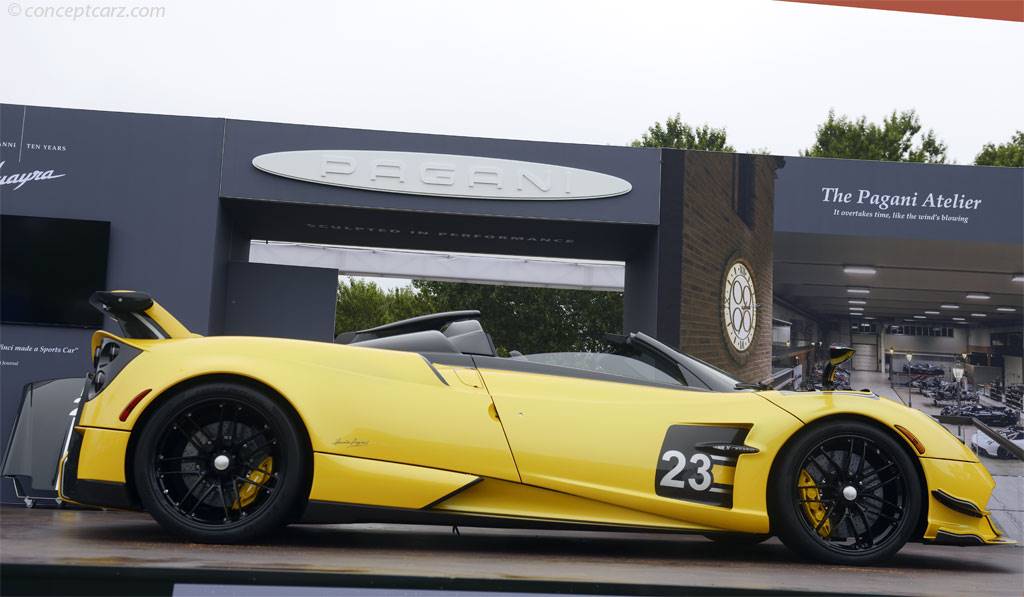
The Quail, Amotorsports Gathering is a world-renowned motorsports event, a prominent component of Monterey Car Week, and a canvas where many of the world's rarest and most exquisite vintage and modern automobiles are showcased. The event is paired with many delicious culinary delights and luxury lifestyle elements in an intimate gathering of old and new friends. This year's celebrated themes included 'Cars of Curiosity,' '50th Anniversary of the Alfa Romeo Montreal,' and 'Automotive Couture, French Cars Featuring the 50th Anniversary of the Citroën SM.'
Keeping with tradition, the featured classes complemented the familiar roster of pre- and post-war classes lining the prestigious greens of Quail Lodge & Golf Club, including 'Pre-War Sports and Racing Cars,' 'The Great Ferraris,' 'Post-War Sports Cars 1961-1975,' 'Post-War Racing Cars,' 'Custom Coachwork,' 'The Evolution of the Supercar,' 'Sports and Racing Motorcycles' and 'Post-War Sports Cars 1945-1960.'
The Cars of Curiosity class was described by The Quail's Gordon McCall as 'cars that were a little odd and their owners embraced that. They didn't want something cliche that could be seen everywhere.' He added, 'They wanted something unique. For instance, a Volvo P1800 station wagon is a very good car, but wasn't an overly popular station wagon....People love such cars today because they are approachable. They put a smile on your face. They are motorcars with whimsy.' Vehicles included in this class were the Fiat Eden ROC, the Volkswagen Karmann-Ghia, the Studebaker Gran Turismo Hawk, the Volvo 1800ES, and a pair of Guldstrand-built GS90 Corvettes.

Famous Corvette racer Dick Guldstrand, also known as 'Mr. Corvette,' sought to build a true 'World Class' American supercar based upon the then-new ZR-1. Rather than a standard appearing version, he sought to provide a distinctively designed bespoke style that harked back to the 'classic' racing Corvettes of the 1950s and 1960s, yet debut the latest features, such as being the first Corvette with projector headlights as well as the three-piece 18-inch wheels. Every panel is new and made of carbon fiber and every scoop or vent is functional. Only the windshield, door glass, and rear-view mirrors remain from the original design. The coupe on display at The Quail was a magazine test car, brochure photo car, as well as being the very first customer-delivered GS-90.

The Dick Guldstrand-built Corvette convertible sitting on display was altogether a different animal from the Coupe GS-90. Its modified LT-1 Corvette engine features a Vortech Supercharger, boosting the horsepower from 300 hp up to approximately 420 hp, ahead of a four-speed automatic and 4:10 Dana 44 rear axle. The performance placed this car in the front ranks of international supercars!

The Evolution of the Supercar class was a brilliant display showcasing vehicles with household names such as the Lamborghini Countach, Lamborghini Diablo, Saleen S7, BMW Z8, Porsche 959, and the Venturi 400 Trophy. More modern examples on display included Chevrolet's new mid-engine Corvette, the Mercedes-Benz Bussink GT R Speedlegendand, the Mercedes-Benz SLS AMG, and the McLaren P1.
Best of Show

The 'Best of Show' honor was bestowed upon a 1938 Mercedes-Benz 540K Special Roadster owned by K. Heinz Keller. It wears Sindelfinger Karosserie Coachwork and was considered one of the fastest production cars of its era. The 5401cc straight-eight engine was the ultimate production version of the supercharged 'Kompressor' line that had begun with the 380K in 1932. Developed by the new chief engineer of Mercedes-Benz, former racing driver Max Sailer, the 540 K succeeded the outwardly similar 500 K in 1936, and some 447 were built before production ended in 1939.
The Mercedes-Benz 540K was perfectly suited for the network of high-speed Autobahns that were spreading across Germany in the 1930s. With its all-round independent suspension by swing axles and an unusual gear shift, with direct-drive top semi-automatically engaged, the 540 K represented the pinnacle in automotive engineering in its day. The Mercedes-Benz-derived supercharger was a unique 'at will' supercharger derived from the company's experience in aero engine design, enabling World War One German aircraft to gain a performance advantage by boosting engine power at altitude. The 540K's supercharger was only clutched in at full throttle, endowing the 540 K with a short power boost for overtaking.
Over the past eighteen years, The Quail, A Motorsports Gathering has become a prominent component of 'Monterey Car Week.' After such a difficult year for the entire world, The Quail returned with an outstanding array of vintage and modern automobiles and several worldwide debuts.
Elegance at The Quail, A Motorsport Gathering

Among the most elegant vehicles at this year's The Quail, A Motorsport Gathering - in our opinion - were the 1931 Duesenberg Model J, a Horch 853, and the Mercedes-Benz 540K.
The Duesenberg

The Model J was the most powerful production vehicle of its era, and in supercharged guise, developed over 300 horsepower. Cadillac's V-16-powered model had twice as many cylinders as the eight-cylinder Model J but produced less horsepower (175 bhp vs the 265 bhp from the 420 cubic-inch straight-8). It was not until 1955 that another North American manufacturer would offer a production vehicle with similar horsepower figures - the Hemi-powered Chrylser C-300 with 300 horsepower.
The mechanical sophistication of the Duesenberg was equaled by its size and elegance, clothed with graceful bodies provided by the finest coachbuilders of the era. The example on display at The Quail, chassis number 2646 (J-448), wore a Tourster body by Derham. It is one of the few retaining the original body, chassis, engine, and other major components. The 420 cubic-inch 'Straight Eight' engine delivered 265 horsepower in naturally aspirated form with dual overhead cams and four valves per cylinder. It has the SC-specification external exhaust pipes which provide period flair, and performance is enhanced by an exhaust system dump at the flip of a lever on the floor. The exhaust-dump system was a rare option; it bypasses the exhaust system and redirects the airflow through a three-inch open pipe.

Just eight examples received the Derham Tourster coachwork designed by Gordon Buehrig. Design cues include a wind-up rear windshield that could be cranked from inside the front seat back. The deletion of the rear side vents and the rear cowl made it easier for passengers to enter and exit.
Following a nut and bolt restoration, the Tourster was awarded Best of Show honors at the Concours d'Elegance of America in 2013, best in class honors at Amelia Island and Pebble Beach Concours in 2012, where it was nominated for best of show.
The Horch

The Horch and the Mercedes-Benz rested side-by-side on the showfield - an appropriate arrangement for these two spectacular vehicles. Horch, named after its founder August Horch, had always been known for its quality and innovation but its reputation would be challenged greatly when Mercedes-Benz unveiled its new 540K. Immediately, Horch began to design a concept meant to compete with the new Mercedes. Carved out of wood, the Horch Special Roadster would be undertaken by the factory works in Malan. And though the car's chassis would begin production, the cars would not be made available for sale, at least not right away. The delay would have to do with whether or not the engines would be supercharged. Ultimately, the 5.0-liter inline eight-cylinder engine remained naturally aspirated but the transmission was equipped with overdrive, which would give it performance close, but not quite the same, as the 540K. The chassis, however, did receive a fully independent De Dion rear suspension placed on double-jointed rear axle shafts designed by Porsche.
The 'First Series' production examples followed very closely to the designs of the concept that had been carved out of wood. The first example would be built by the factory. The second example would be designed and built by the exceptional coachbuilders from Berlin, Erdmann and Rossi.

As the Second World War came into view and the Nazi party gained power throughout Germany, Mercedes-Benz and Horch continued to compete for superiority, hoping to gain contracts to build parade vehicles for high-ranking members of the Third Reich. Horch would build the first example of the 'Second Series' especially for Hermann Goering, commander-in-chief for the German Luftwaffe. However, Mercedez would also be building a special 540K for him as well, equipped with extra materials to protect the occupants within the vehicle. Goering would go with the Mercedes and would have the Horch, which had been built especially for him, dismantled.
Horch would ultimately build just five examples of the 'Second Series' 853s. The first example was the one dismantled by Goering and the last would be lost. Thus, just three examples of the 'Second Series' remain. All five wore the same 'sweep panel' in the body sides and the shaped fender skirts, however, each were quite unique in their own design.

The example on display at The Quail is believed to be the second example with coachwork by Voll & Rubrbeck. They were a German coachbuilding firm in business for approximately two decades, from 1920 through 1939. Their work graced such automobiles as Bugatti, Mercedes-Benz, Rolls-Royce, and Maybach. During World War II, the firm was destroyed from an allied bombing raid, and records were also lost.
The Horch 853 with Voll & Rubrbeck coachwork survived, and more recently, its elegance has been observed at many top concours events. It won Best of Show honors in 2009 at the Pebble Beach Concours, and the same accolades in 2014 at the Amelia Island Concours. At this year's The Quail, A Motorsport Gathering, it was certainly a contender for top honors.
The Mercedes-Benz

The Mercedes-Benz 540K proved its superiority over the Horch during World War II, being built in greater numbers and with far superior examples built. The example receiving the Rolex Circle of Champions' 'Best of Show' at The Quail is owned by K. Heinz Keller from California who has owned the car since 1986. Mr. Keller acquired the car from a private owner in Colorado and has treated the vehicle to an eight-year ground-up restoration. Its design, engineering, sophistication, and presentation made it a Paragon among the more than 200 entrants at the event.
Judging at The Quail
While traditional concours events rely on the wisdom and scrutiny of judges (experts in the automotive fields), The Quail, a Motorsports Gathering distinguishes itself through its unique judging process. Entrants of The Quail select the winning car in their own class, as well as the esteemed Best of Show. Entrants at The Quail are knowledgeable individuals in the world of motor vehicles as many are renowned experts and car collectors. Many are also well versed in style and luxury lifestyle. The selection process for each class considers criteria of design features, technical interest, accurate restoration, and historical significance.
Both the Horch and the 540K wore strikingly similar designs. Provenance and restoration certainly played a part in the decision, but perhaps the deciding factor was the 180 horsepower produced by the Mercedes compared to the 120 bhp of the Horch. Like its place in history, the Horch would play 'second fiddle' to the mighty Mercedes-Benz 540K which was selected as this year's Best of Show. The popularity and elegance of the Mercedes-Benz 540K were further reinforced when another example claiming the Best of Show trophy at the Pebble Beach Concours d'Elegance a few days later.
Pagani at The Quail, A Motorsport Gathering

Among the many highlights that greet guests as they enter the show field was the Pagani display which traditionally showcases approximately a dozen of these exclusive examples resting shoulder-to-shoulder. Pagani Automobili S.p.A. is an Italian manufacturer of sports cars and carbon fiber components that was founded in 1992 by the Argentinian Horacio Pagani and is based in San Cesario sul Panaro.
The company's first model was the Zonda equipped with a mid-mounted DOHC V12 engine manufactured by Mercedes-Benz's AMG division. The exterior design was inspired by the Sauber-Mercedes Silver Arrow Group C cars and by jet fighters, incorporating several unique design elements, including its four-pipe exhaust system.
On display at The Quail, A Motorsport Gathering was a Zonda F and the first S&D approved, fully legalized Zonda F example to date, confirmed by the factory.


The Pagani Zonda was followed by the Zonda 'Cinquie' in 2009, based on the track-only Zonda R and powered by a new 678 horsepower Mercedes-Benz M297 V12 engine. Just five examples were built and each received several unique elements from the newly developed material 'carbon-titanium fibre.' An additional five examples of the Zonda Cinque Roadster followed in July of 2009, powered by the same M297 Mercedes engine.
Three examples of the Zonda Tricolore were eventually built. First introduced in 2010 at the Geneva Motor Show, the exclusive model was built to commemorate the 50th anniversary of the Frecce Tricolori, the Italian Air Force's aerobatic squadron. The 7.3-liter Mercedes AMG V12 engine delivered 670 horsepower endowing it with a top speed of 217 mph and capable of racing from zero-to-sixty mph in a mere 3.2 seconds.

At the Geneva Motor Show in 2011, Pagani introduced the successor to the Zonda, the Pagani Huayra named after the Incan god of wind, Huayra-tata. Its 6.0-liter twin-turbocharged M158 V12 engine from Mercedes AMG produced 730 horsepower and 1,000 NM of torque. The body was comprised of carbotanium - a lightweight composition of carbon fiber and titanium. A total of 100 examples were built with each example selling new for over a million (USD) dollars.
Thanks to its innovative characteristics, the Huayra achieved three of the most prestigious awards in the car world as Car of The Year in 2012.

In 2016, the Huayra BC was displayed at the Geneva Motor Show, with the 'BC' named after the late Benny Caiola, a friend of Horacio Pagani, and the first Pagani customer. Although the Huayra was already a paragon in the hypercar arena, Pagani raised the bar even further, improving upon the Huayra's engine with output growing to 754 horsepower. An all-new material called 'carbon-triax' allowed weight to be reduced by approximately 290 pounds, and additional weight was shed by the lightweight titanium exhaust system, new aluminum alloy wheels, and a stripped-out interior. Only twenty examples were built and each had an MSRP exceeding $2 million (USD).

Conceived primarily as a road-going car, the Huayra BC has been inspired by its 'track-focused' predecessors: the Pagani Zonda R and the Zonda Cinque. Developed as a natural evolution of the Coupe, the car is pure raw power packaged into a 1218 Kg high-performance automobile, and, at 1.8 G, is capable of the highest lateral acceleration ever seen on a car with road tires.
At the time of its launch, the Huayra BC was the most technologically advanced Huayra Coupe yet.

One example on display at The Quail, A Motorsport Gathering, was a made-to-measure upgraded example with a custom-made spoiler inspired by the Roadster BC design. The air scoop and the conveyor placed beneath the bonnet direct the airflow to the engine to augment its efficiency and performance. The hardtop is rigid and made of carbon fiber like the Roadster BC, as are the seats which are now single-piece. Furthermore, their stitching design recalls the pattern of the carbon-fiber details, whereas, on other Roadsters, they would be made of leather.
Tractive's new adaptive shock-absorbers were installed and the rims came from the BC Tempesta. They are lighter than those of the Roadster and foster the general handling of the car. The car also benefits from the recent installation of the Pagani LEO platform.
